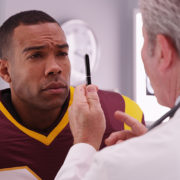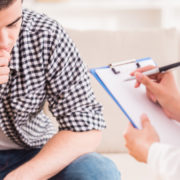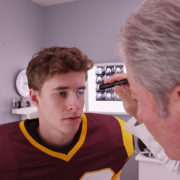The ADHD Lifestyle Part I: Diet
The ADHD Lifestyle Part I: Diet

The brain is vital organ that, like the other organs in the body, depend on nutrients for healthy function and endurance. Those with ADHD are even more dependent on proper nutrients and sleep. Cognition, memory, and mood may all be affected by eating well. More importantly, unhealthy eating and poor sleep can exacerbate ADHD symptoms and make a profound difference in academic success. Studies have shown that the elimination of processed sugars and other unwholesome foods improve ADHD symptoms in the majority of study participants. Why does diet make such a profound impact? Food influences the chemicals in the brain that are involved in ADHD. Importantly, serotonin and dopamine are the major players here. In addition to influencing ADHD symptoms, serotonin levels can also influence sleep behavior.
While not technically a drug, healthy nutrients in everyday food can be thought of as a potent “medication” that may profoundly impact the performance of one with ADHD. In this light, it is important for one to take his or her “daily dose.” This includes plenty of drinking water, complex carbohydrates, and lean protein gradually and consistently taken in on daily basis. Such behavior will increase positive sleeping behavior while keeping serotonin and dopamine at advantageous levels. Conversely, simple sugars like candy or soda, may create an initial spike in these neurotransmitters, but this will be followed by a sharp decline that will leave on craving even more unhealthy food. The result is a “domino effect” and putting the brain in a chemical state that may strengthen the negative behavioral symptoms of ADHD.
Three quick pointers:
*Drink plenty of water and avoid excessive amounts of caffeine and alcohol. Importantly, stay hydrated while avoiding sugary drinks. Sugar drinks are a waste of calories!
*Eat smart: not all calories are the same! It is important to intake a proper amount of daily calories to feed the brain. However, not all calories will affect ADHD symptoms uniformly. Unfortunately for those with ADHD, impulsive tendencies often lead to consumption of simple carbohydrates such as soda, candy, and processed snacks that cause sharp unsustainable increases in blood sugar. On the other hand, complex carbohydrates, such as fruits and vegetables, will have result in more favorable and sustained neurotransmitter levels. Foods high in protein will help control blood sugar levels. When one consistently practices good habits, some of the cravings for “junk food” will be better controlled. Go for those sweet potatoes and blueberries next time you are at the grocery store!
*Get sleep! Food and sleep are intimately related and, together, they both profoundly affect the behavioral and emotional state of those with ADHD.
The Pathways team of professionals has helped thousands of people with brain injuries. We are Dedicated to effective and compassionate care for individuals with neurological challenges.
The post The ADHD Lifestyle Part I: Diet appeared first on Pathways Neuropsychology Associates.
Source: Pathways Neuropsychology
The ADHD Lifestyle Part I: Diet













 March is
March is 


